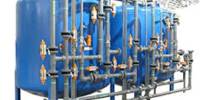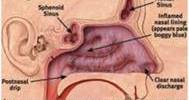Nutrient management is the science and practice of linking soil, crop, weather, and hydrologic factors with cultural, irrigation, and soil and water conservation practices in order to achieve optimal nutrient use efficiency, crop yields, crop quality, and economic returns while reducing off-site transport of nutrients (fertilizer) that may have an environmental impact. It is an important part of farming and environmental care.
It entails tailoring fertilizer treatment rate, source, timing, and place to specific field soil, climatic, and crop management circumstances (also known as the 4R nutrient stewardship). It entails the careful and long-term control of nutrients, primarily nitrogen (N), phosphorus (P), and potassium (K), as well as other necessary components like as sulfur (S), calcium (Ca), and magnesium (Mg). Effective nutrient management is crucial for maximizing crop yields, minimizing environmental impacts, and ensuring long-term soil fertility.
Important factors to consider when managing nutrients include (a) the application of nutrients while keeping in mind the achievable optimum yields and, in some cases, crop quality; (b) the management, application, and timing of nutrients using a budget based on all sources and sinks active at the site; and (c) the management of soil, water, and crop to minimize off-site transport of nutrients from nutrient leaching out of the root zone, surface runoff, and volatilization.
Here are some key aspects of nutrient management:
- Soil Testing: The first step in nutrient management is soil testing. It entails testing soil samples for nutrient levels, pH, and other soil qualities. This data assists farmers in making informed decisions about nutrient application.
- Nutrient Recommendations: Experts can make suggestions on the type and amount of fertilizers or soil amendments needed to meet the specific nutritional requirements of crops based on soil test findings.
- Fertilizer Application: It is critical to apply fertilizers at the proper time and in the right quantity. This avoids over-fertilization, which can cause nutrient runoff and pollution, as well as under-fertilization, which can diminish crop yields.
- Timing: Timing is critical in nutrient management. Applying nutrients when the crops need them most ensures efficient uptake and reduces the risk of nutrient losses to the environment.
- Nutrient Sources: Farmers can choose from various nutrient sources, including synthetic fertilizers, organic fertilizers (e.g., compost and manure), and cover crops. Each source has its benefits and considerations.
Nutrient management seeks to reduce nutrient runoff into bodies of water, which can lead to water pollution and dangerous algal blooms. Buffer strips, regulated drainage, and limited fertilizer use near sensitive areas are examples of sustainable techniques.
Effective nitrogen management is critical not only for agricultural productivity but also for reducing agricultural environmental consequences. To guarantee that nutrients are used efficiently and responsibly in farming operations, a combination of science-based advice, contemporary technologies, and sustainable practices is required.
















